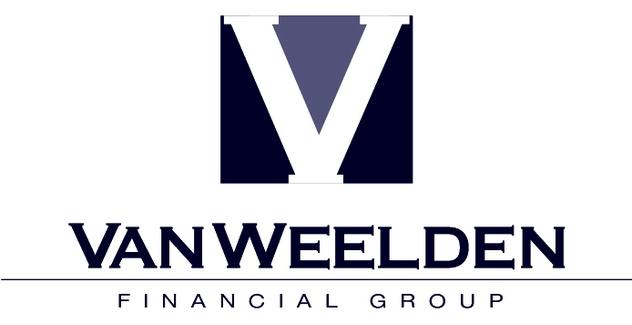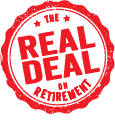
Taxes in Retirement
No truly holistic retirement plan would be complete without thoroughly addressing long-term tax planning. After all, the difference between $10,000 a month of taxable income and $10,000 a month of tax-free income is dramatic.
So while the Bucket Plan is the best way to structure your financial assets to tackle today’s market challenges while meeting your immediate, short-term, and long-term goals, you also need to consider the tax consequences of all those assets you’ll be relying on to generate your retirement income over the next 30 years or more.
As a Tax Advisor, we help our clients understand this by dividing assets into three categories: Tax Deferred, After Tax, and Tax Free.
Tax deferred assets are not taxed as they grow, but they are taxed when they are withdrawn for use.
After Tax assets may or may not be taxed as they grow, but they are never taxed just because you withdraw them for use. Lastly, tax-free assets are never taxed on their growth, nor when they are withdrawn for use. (spoiler alert – these are the best assets to have in retirement!)
The biggest problem I see as a Tax Advisor is that people these days tend to have the majority of their money in tax-deferred assets. We’ve all been encouraged to pour money into our tax-deferred retirement plans.
The idea being that we’ll be in a lower tax bracket when we retire. But unfortunately, these are the worst assets to have during retirement because they’re the most taxable.
You see, while it’s true you might get a tax deduction when you place money into your tax-deferred accounts, it is still taxable. You’re simply putting off paying the tax. Think about it this way – you’re choosing to not pay tax on the seed you’re planting, but you will have to pay tax on the harvest you reap down the road. So if you place $10,000 into a tax-deferred account today, you might save $2,000 in taxes. But if that $10,000 grows to $40,000 over 20 or 30 years, you will owe $8,000 when you go to spend it – and that’s assuming tax rates never go up!
The second biggest problem I see as a Tax Advisor is that most people don’t incorporate long-term tax planning into their retirement plan. So they never diffuse this tax time bomb and then at age 70 or 72 – bam! It’s too late. I meet with lots of retirees who can’t believe they have a tax problem at age 72, because no one ever explained it to them, much less helped them design a solution. And most of these people have advisors! Unbelievable!
Most people, including accountants, only think about taxes in terms of this year, or maybe next. We want to help you think about taxes in terms of the next thirty years!
This is why it’s so important to have a detailed retirement income plan that considers the interactions between social security, pensions, tax-deferred, after-tax, and tax-free income sources over time.
We really just scratched the surface here in terms of taxes in retirement, but if you’d like to learn more about creating a tax-free retirement, just call the office and schedule an in-person or virtual appointment. We serve clients throughout the US and we’d be happy to help you, too.
Your Preferred Future
We will begin our deep dive into the details of each of the three steps – starting with Step 1: Planning for your preferred future. Getting this first step right will give you a strong sense of peace regarding the success of your plan.
Your preferred future is what you’ve had in mind all these years and why you’ve been working so hard to get to this point. And now you’re here! This is the fun part, when you get to actually see your dreams materialize into an achievable reality.
Everyone else will tell you that planning for your ideal retirement is all about how much money you have. I’m telling you they’re wrong. They’re all wrong. Retirement is not about how much money you have. Retirement is a cash flow problem. Period. It’s about creating stable, increasing, tax-efficient, lifetime income.
By stable I mean not overly dependent on factors you can’t control, like the stock market, or interest rates, or tax rates. You want to know, just like your paycheck, it’s going to be there.
Increasing because it has to keep up with inflation in order for you to retain your standard of living. So your income will need to increase on a compounding basis, throughout your retirement years.
It also needs to be tax efficient. As a Tax Advisor, I help to ensure it is. There’s a saying that only two things in life are certain – death and taxes. But the only thing certain about taxes is that they will exist, and we will have to pay them. Unfortunately, what future tax rates will be is anything but certain. If I were a betting man, I’d say tax rates will be much higher ten or twenty years from now than they are today. But regardless of whether I’m right or not, if we want our money to go as far as possible, we can’t ignore the impact taxes are likely to have.
Lifetime income is pretty straight forward. You need your income to last as long as you do. And since we don’t know when you’re going to die, it needs to last practically indefinitely.
Once we’ve created your stable, increasing, tax-efficient, lifetime income, then and only then, do we care about how much money or assets you have.
But these are not the assets you’re relying on to generate your income. It’s precisely the opposite. These are the assets you’re not relying on to generate the income.
These are your discretionary, liquid assets. These are the assets you’ll access whenever you want or need something that’s not included in your ordinary, monthly expenses.
Maybe a furnace or maybe a second home, or a new car, or an extra vacation…
We don’t want you touching the assets that are producing your income, because that would be like taking a bite out of the goose that’s laying your golden eggs. We want separate, liquid assets that we’re not relying on for income.
So since retirement is all about cash flow, then our plan better be VERY detailed when it comes to that cash flow.
Let me explain what I mean: Not so long ago, a couple came into our office, we’ll call them Jack and Jill. They had recently attended one of our evening classes and afterward they signed up for a retirement strategy session. Like many people who attend our classes, they already had an advisor, so they brought their plan with them and we reviewed it together. They had told their advisor how much they thought they’d need each month in retirement. He plugged that into his software. He also totaled up all their investments and assumed a 7% average rate of return based on his recommended portfolio allocation.
Then he ran a simulation to determine if they were likely to have enough or if they were likely to run out of money, assuming they had an average life expectancy. That was it. Their entire plan was a very esoteric probability of success, given a number of historic market scenarios.
The simulation didn’t tell them:
Where would their income come from each year?
How much tax they would owe each year?
How much discretionary, liquid assets would they have available from year to year?
What would happen if one of them were to die prematurely?
What would happen if we experienced another 2008 within their first ten years of retirement?
What would happen if one of them required skilled nursing care for an extended period of time?
What they actually had was nothing more than an educated guess. They asked us to design a comprehensive retirement plan for them and now they have the answers to all of these questions. Remember, retirement is a cash flow problem. Solving the cash flow problem requires a detailed, annualized, cash flow projection, not a generalized, overall probability of success.

“We measure success not by some arbitrary statistic, but rather by our clients’ ability to achieve their personal retirement objectives.”

